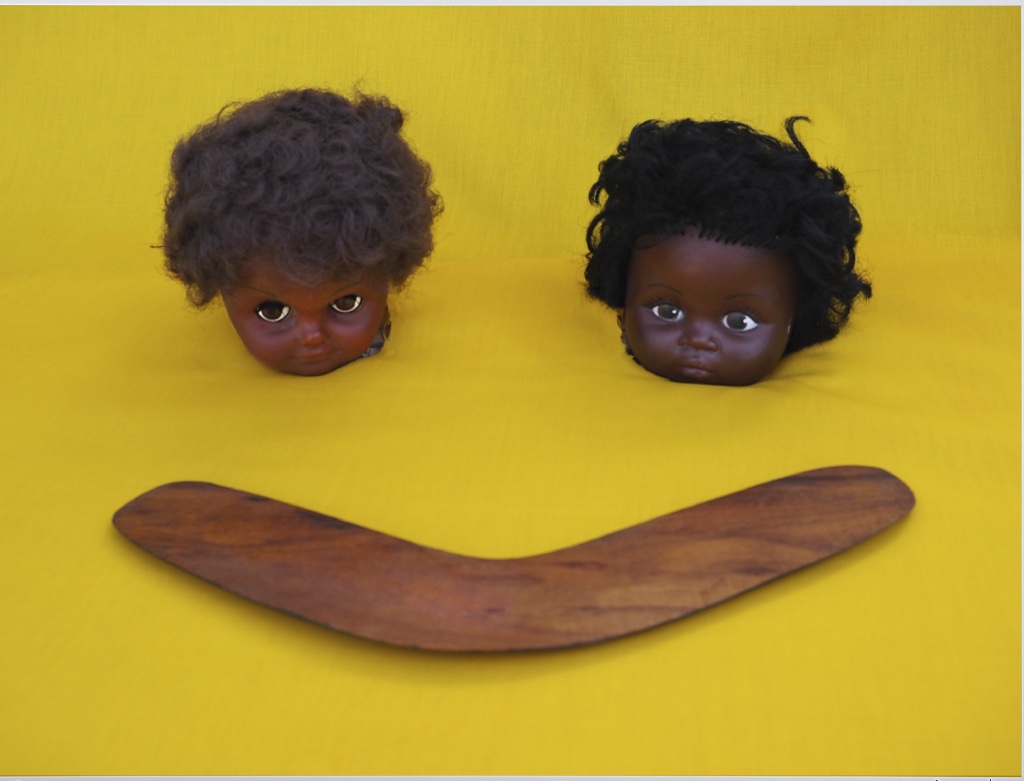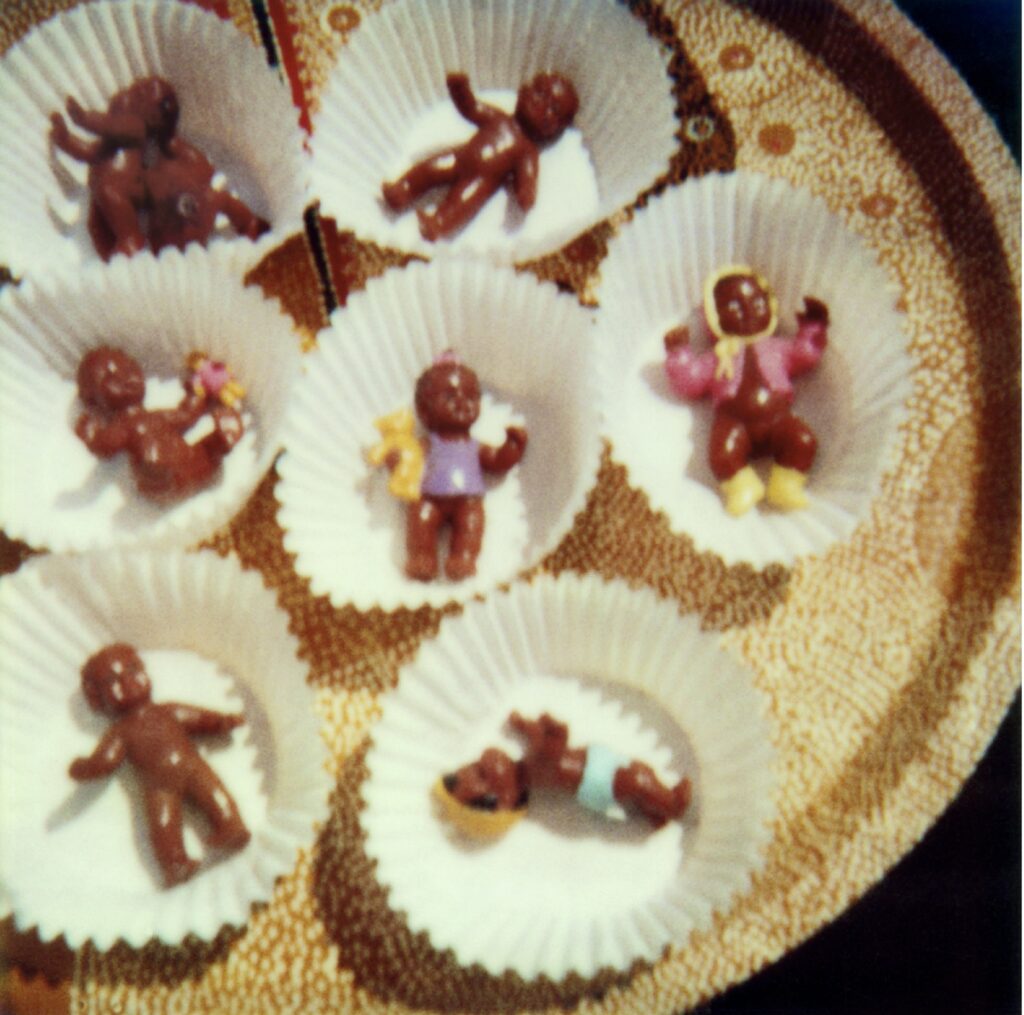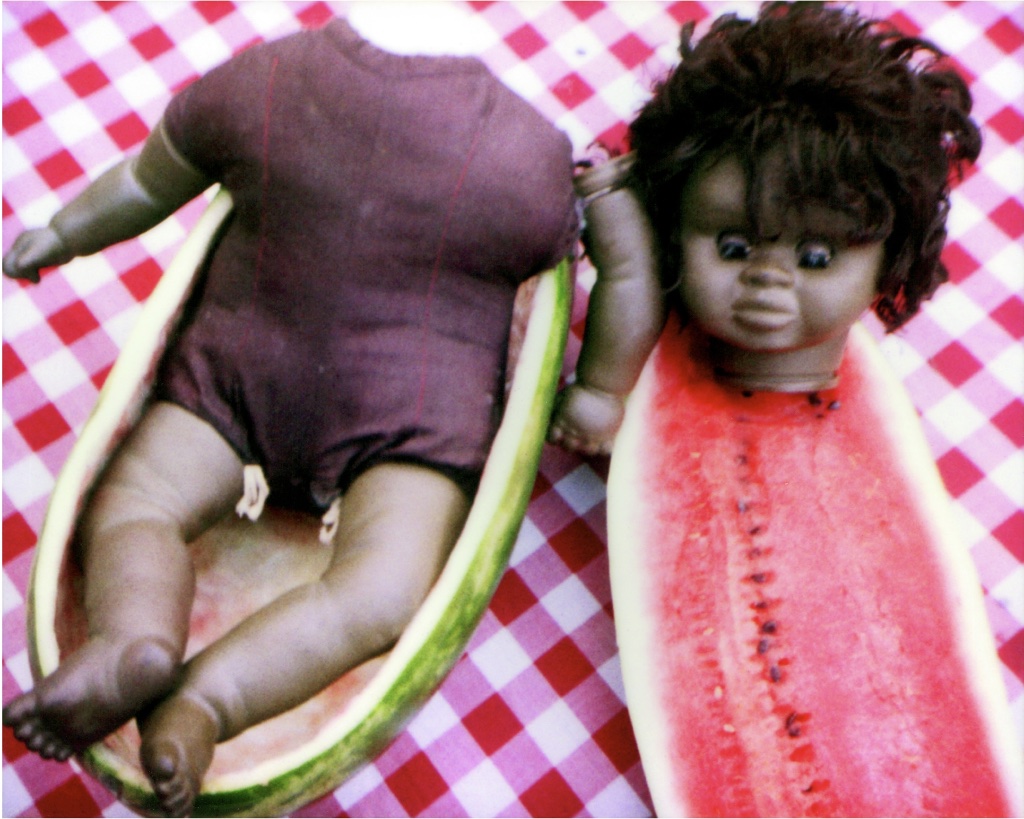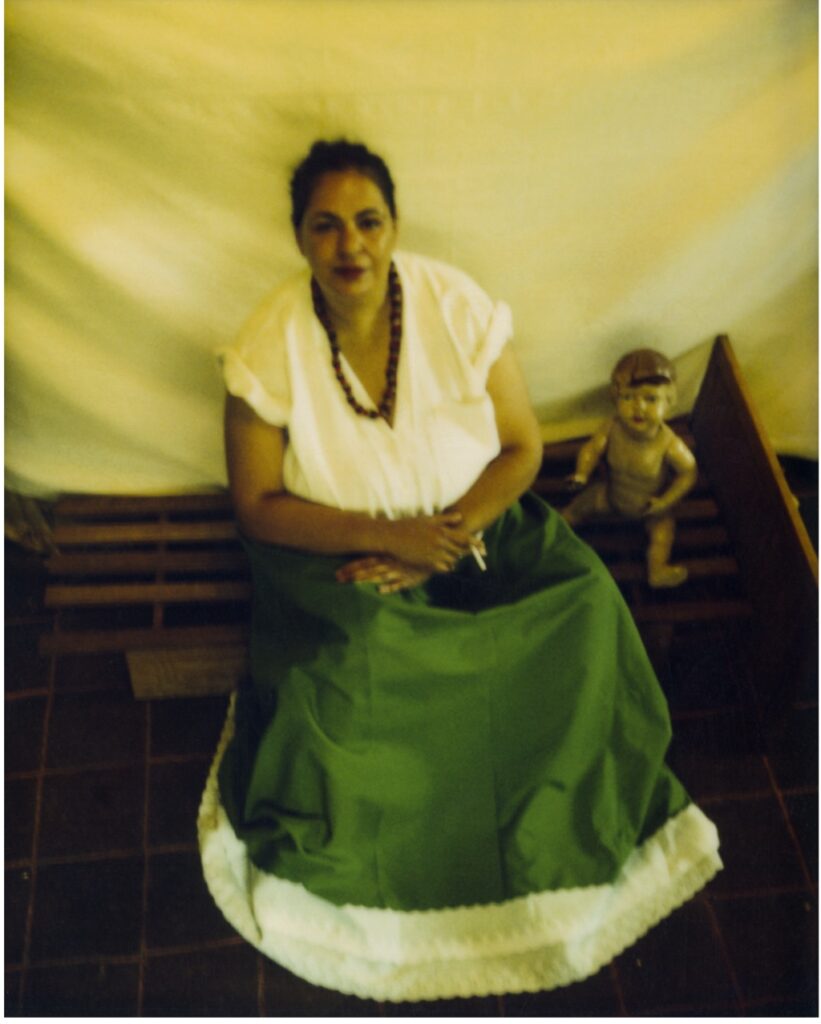
When the renowned Australian photographer Destiny Deacon was a little girl, other children were always calling her a “black little c**t.” When she grew up and started taking photographs, she decided to take the “C” out of the word “Black,” which explains the title of the work “Blak Lik Mi” in the exhibition “Destiny: The Art of Destiny Deacon” at the Australian Embassy in Paris, the perfect venue for a show so imbued with Australian culture and the artist’s dark sense of humor.
Such is Deacon’s influence that many Aboriginal people have adopted “Blak” as a self-description. The title “Blak Lik Mi” (originally created in 1991) is a reference to the book Black Like Me (1961) by John Howard Griffin, in which the author changed his skin color so he could pass as a Black man in the United States. The work consists of Deacon’s blurry photo of reproductions of photos taken by Alex Poignant in the 1950s for a series called Picaninny Walkabout (later changed to Bush Walkabout). Deacon decided “to turn the colonial gaze back on the colonizer,” says Myles Russell-Cook, curator of this show and of indigenous art at the National Gallery of Victoria. She became a witness, “photographing the photograph and subverting her position as both subject and photographer.”
Deacon’s photos, which often have a happy, childlike look to them and can elicit a laugh, straddle the fine line between comedy and tragedy. “As she likes to say,” says Russell-Cook, “‘if you’re laughing, you don’t see the knife going in’.”

A good example is the early photo “Adoption,” which shows cutesy little dolls lying in paper cupcake shells. The miniature dolls, however, are actually racist kitsch found in many white homes when Deacon was a child. When you start to think about this photo, you wonder why the dolls are in those cupcake shells – they must be about to go into the oven. The title refers to the Australian government’s disgraceful “Stolen Generations” program, which took Aboriginal and mixed-race children away from their parents and placed them in institutions.
Deacon started collecting these little dolls because, even though she found them disgusting, she “wanted to rescue them. … Otherwise, they’d end up in a white home or something, somewhere no one would appreciate them.”

Another doll makes an appearance in a photo with the punning title “Meloncholy” (Deacon loves to play with words), a reference to Marvin Van Peebles’ film Watermelon Man (also inspired by Griffin’s book Black Like Me), in which a white man wakes up one morning and finds that he has turned Black. In the photo, the hollowed-out watermelon resembles a coolamon, an Aboriginal vessel sometimes used to carry babies. Here it is cradling only the body of the doll, whose head has been severed and sits on the scooped-out fruit. (Apparently, in Australia, however, the watermelon does not have the racist connotations it has in America.)
Severed doll heads also feature in the ironic “Smile” (pictured at the top of this page), which uses two very Australian symbols, the black dolly and the boomerang, to form a smiley face, giving a sinister new twist to this ubiquitous and usually innocuous symbol.

Deacon doesn’t use dolls in all of her images, of course, but all of them deal with serious subjects with a sense of humor and many layers of meaning, some of them accessible only to those familiar with Australian culture (wall labels and other texts in English can be found here). I recommend that you visit the exhibition to see the full range of her work and her comic film “I Don’t Wanna be a Bludger,” in which she plays her troublemaking alter ego Delores, who is on a quest to find a career so she can get off welfare (a bludger is a slacker; the dole is welfare).
The show is being held in a wonderful light-filled space with a direct view of the Eiffel Tower in the embassy’s brutalist 1977 building (actually two curved buildings) in quartz- and granite-faced precast concrete, designed by Australian architect Harry Seidler, with Marcel Breuer and Pier Luigi Nervi as consultants. Worth seeing in itself.
Favorite